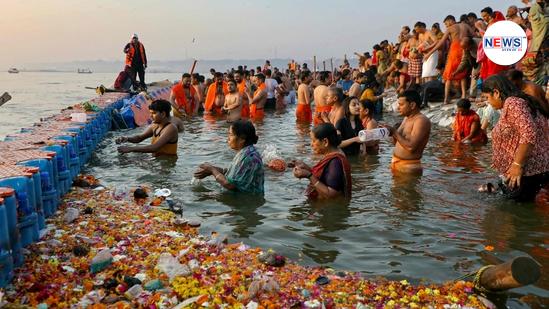
CPCB says Sangam water ‘unsafe’ due to high BOD level. What does it mean? Explained
The water at Triveni Sangam, the confluence of three rivers – Ganga, Yamuna and mythical Saraswati, has been deemed unfit for bathing by the central pollution body, citing high levels of biological oxygen demand (BOD) in the water.
The report comes at a time when lakhs of devotees are thronging Uttar Pradesh’s Prayagraj to take a holy dip in the Sangam amid the ongoing Maha Kumbh Mela.
The Maha Kumbh is one of the world’s largest religious gatherings, attracting crores of devotees from across the world through its month-long span. Taking a holy dip in the Sangam is one of the key rituals devotees perform when attending Maha Kumbh.
However, that may not be safe for devotees anymore, said the Central Pollution Control Board citing faecal contamination and also unsafe levels of biological oxygen demand (BOD).
What is BOD?
According to a report, BOD refers to the amount of oxygen required by aerobic microorganisms to break down organic material in a water body. A higher BOD level indicates more organic content in the water.
Giving a more detailed description, the United States Geological Survey says, “Biochemical oxygen demand (BOD) represents the amount of oxygen consumed by bacteria and other microorganisms while they decompose organic matter under aerobic (oxygen is present) conditions at a specified temperature.”
This means that a higher BOD level indicates the presence of more organic matter in a water body.
A small amount of dissolved oxygen, up to about ten molecules of oxygen per million of water, is crucial to maintain aquatic life and aesthetic quality of water bodies such as lakes and streams, says the USGS.
For river water, if the BOD level is less than 3 milligrams a litre, it is considered safe for bathing.
How much BOD in Triveni Sangam?
According to the CPCB, the water in the Sangam was fit for bathing after the Maha Kumbh commenced on January 13, 2025 “due to freshwater intrusion at upstream locations”, the report said.
The BOD level was 3.94 milligrams per litre on January 13, shows CPCB data. However, the levels have gone up recently. At 5 am on February 16, the BOD level at sangam was 5.09 milligrams per litre. On February 18, at 5 pm, it was 4.6 milligrams per litre and on Wednesday, February 19, at 8 am, the level shot up 5.29 milligrams per litre.
On other major days of snan (holy bath) too, the BOD levels were within the fit for bathing level. On Makar Sankranti, January 14, the BOD levels were recorded at 2.28 milligrams per litre which dropped even further to 1 milligram per litre the next day. On Mauni Amavasya, January 29, one of the holiest occasions to take a dip in the sangam, the BOD was recorded at 3.26 milligrams per litre.
Yogi Adityanath denies
Denying that the water in the Sangam was unfit for bathing, Uttar Pradesh chief minister Yogi Adityanath said the water was fit for even drinking.
Addressing the state assembly on Wednesday, Yogi Adityanath said, “Questions are being raised about the quality of the water (at Triveni) … All the pipes and the drains in and around Sangam have been taped, and the water is being released only after purification.”
In contradiction to the data put forth by CPCB, Yogi Adityanath on Wednesday said, “As per today’s reports, the amount of BOD near Sangam is less than 3, and the dissolved oxygen is around 8-9. This means that the Sangam water is suitable not just for bathing but also for ‘Aachman’.”





